
This island with its emblematic pinnacle is located in the northwest of Santa Cruz. Here you will have the opportunity to see one of the most beautiful landscapes in the Galapagos Islands while learning about the volcanic origins of the islands. Arriving in Bartolome, you will begin the walk along a path that will take you to the top of the island, through its 395 steps that end with a spectacular panoramic view of the island and its pinnacle. During the walk you will observe small lava tubes which are the product of the last eruption and where endemic vegetation such as lava cacti and tiquilla plants grow, usually surrounded by Darwin’s finches. Did you know that Pinnacle Rock is made of volcanic ash?
After the walk and having been impressed by the view from this point, you will enjoy a zodiac ride along the coast where, with a little luck, you will be able to spot the Galapagos penguin.
Dive site
The underwater Bartholome formations offer a bottom starting at 45 feet (15 m), followed by a wall disappearing into the depths. This is a good place to observe different species of sharks and other pelagic species. This dive site is rarely visited by diving cruises and daily diving excursion. Several species of fish can be observed at this site and, looking out to sea, it may be possible to observe hammerhead sharks, Galapagos sharks or manta rays.
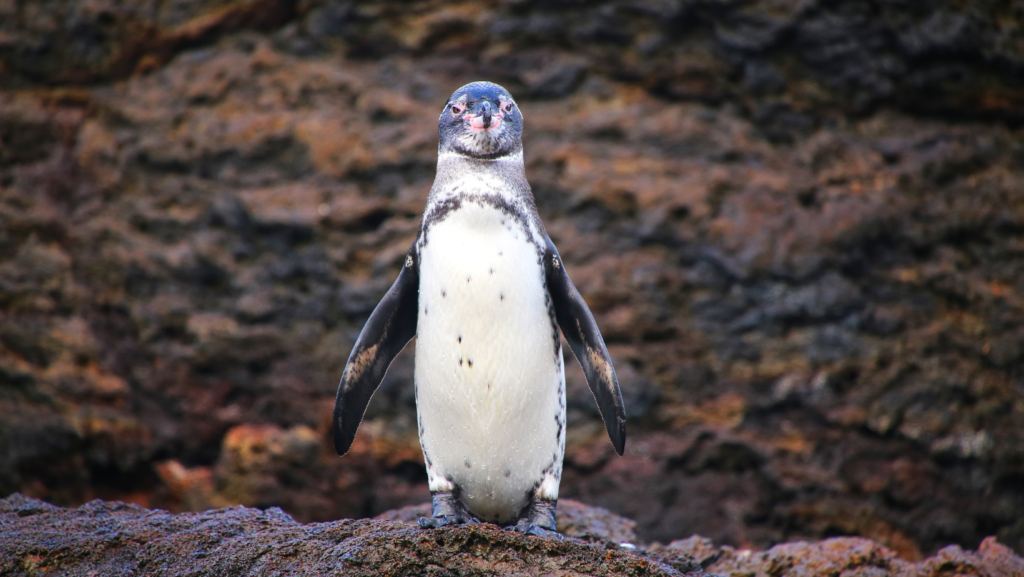
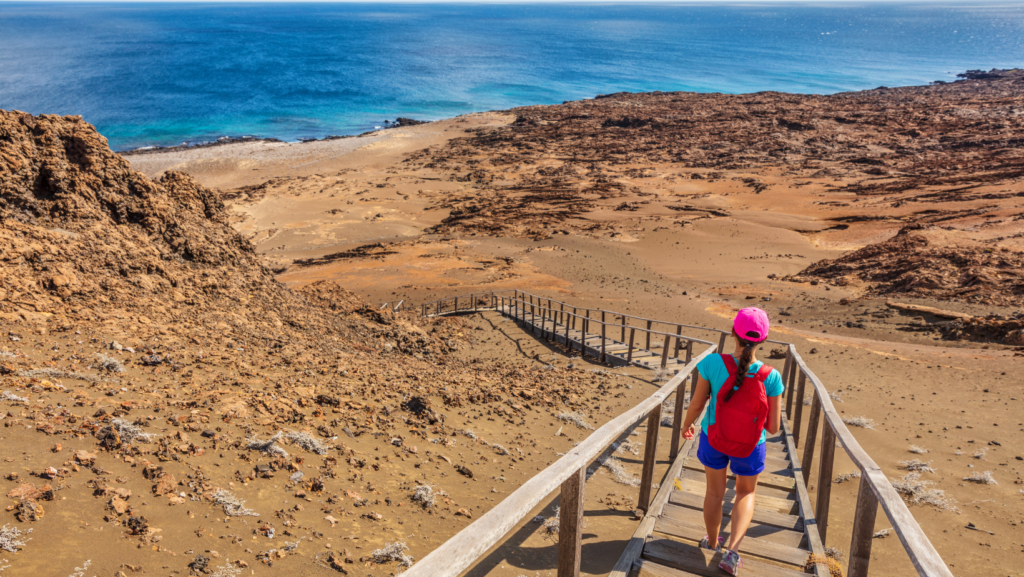

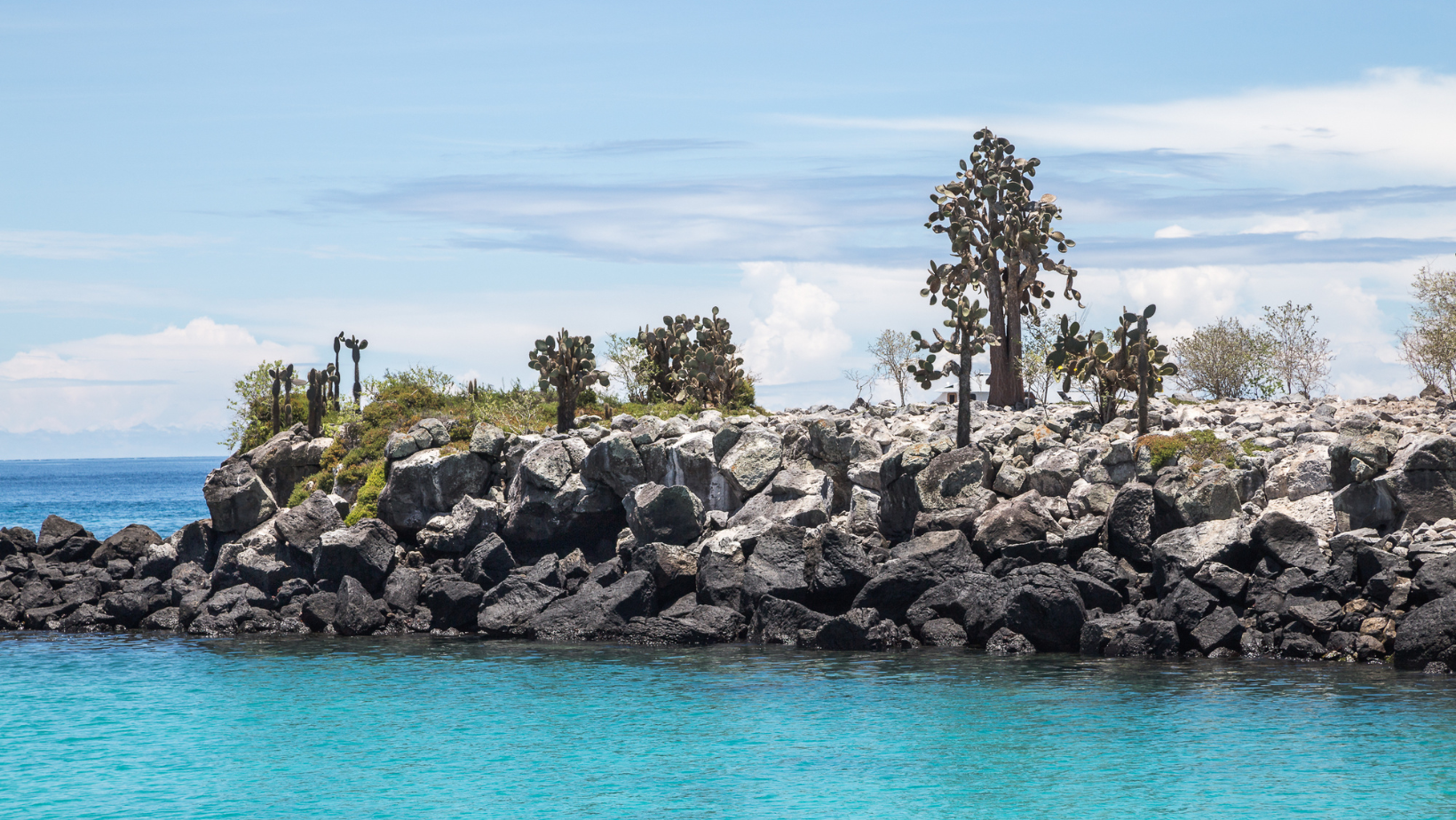
Did you know that the island of Santa Fe is one of the oldest in the entire Galapagos archipelago ? Santa Fe has underwater rock formations dating back approximately 4 million years. Its relatively flat surface is the result of tectonic uplift. In Santa Fe you will find one of the most iconic endemic species of the Galapagos : the Santa Fe land iguana. A very characteristic iguana due to its yellowish color. Another endemic specie to this island is the Santa Fe rice rat, but don’t worry, it can only be seen at night.
During this day you will also be able to observe the largest species of opuntia cactus and the Galapagos hawk (the largest predator on the island), the blue-footed booby, the Galapagos sea lion, frigate birds (royal and magnificent) and the marine iguana. Once the walk is finished, you can swim in the Encañada, where it is also possible to snorkel with sea turtles, rays, sea lions and colorful fish while swimming in the warm and crystal clear waters of this island.
Dive site
The island of Santa Fe offers several sites for scuba diving. The first site is called the Punta and is composed of a pinnacle, the underwater floor of which is composed of stacked rocks forming a downward slope to a sandy bottom at approximately 91 feet (28 m). The second site, La Cueva, is also made up of rocks, with a network of “swim throughs” allowing you to have fun. Around Santa Fe, it is possible to observe a wide diversity of colorful fish, sea lions, red-lipped batfish and white-tip sharks. This island is only visited by daily trips from Santa Cruz. No diving cruise stops here.
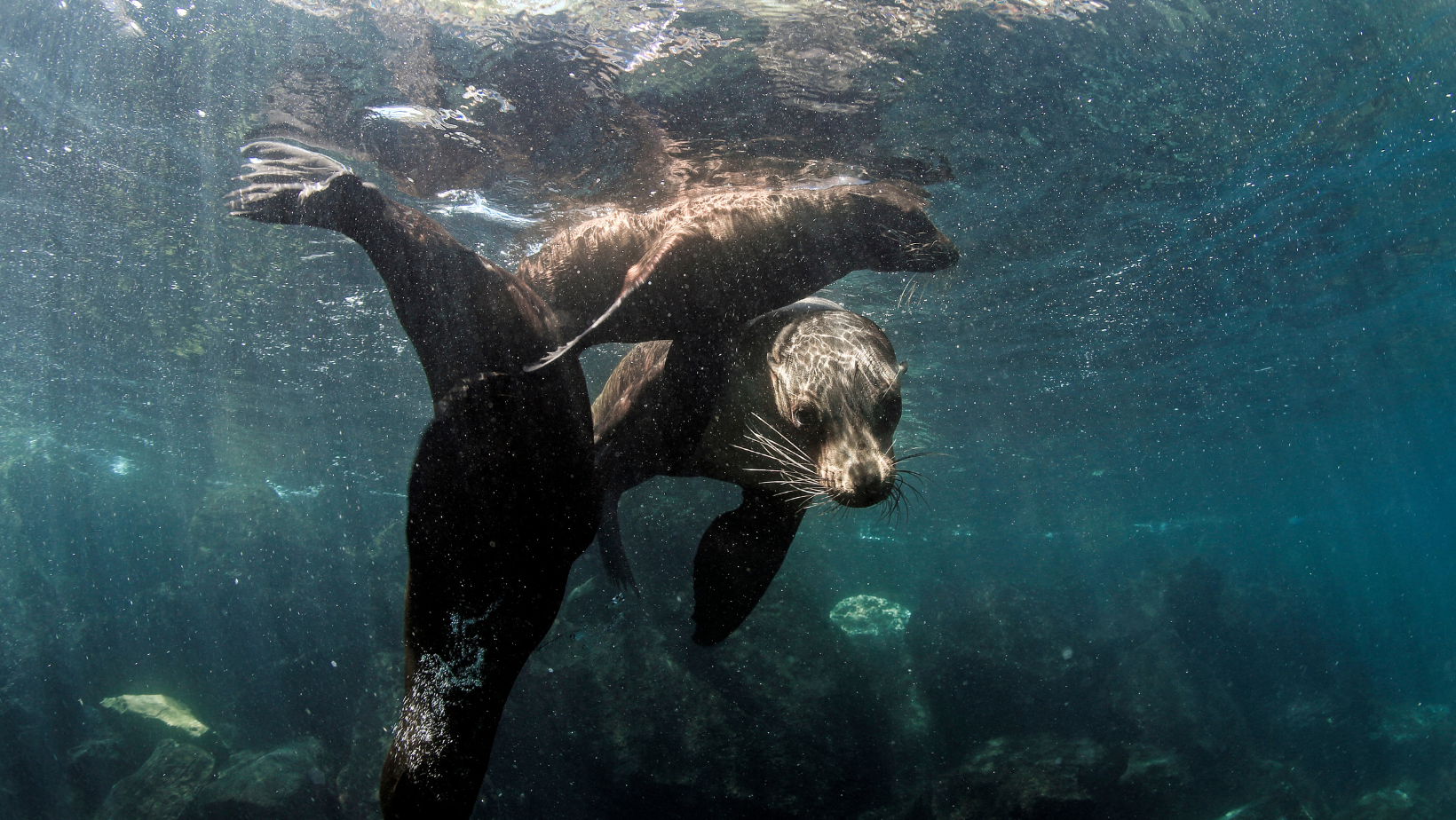
Dive site
Pinzon Island is a small island west of Santa Cruz. Two underwater pinnacles on the northeast side of the island are interesting diving sites. The currents, however, are very variable and the wall descends to depths of more than 140 feet (40 m). This site, for advanced divers, offers the chance to observe sea turtles, red-lipped batfish, white-tip sharks and horned sharks, among others. This site is generally visited on daily tours and rarely on a diving cruise.

Dive site
This islet is located in the northwest of Santa Cruz Island, about 1 hour of navigation from the Itabaca channel. This site is not frequented often and is only visited by day trips from Santa Cruz. The dive site consists of a coral-covered wall that descends into a sandy bottom approximately 75 feet (20 m) deep. The site is sheltered from the current and generally offers excellent visibility. Since there is little current, pelagic fauna is not present there, but it is possible to observe several species of colorful fish and sea lions.

Dive site
This site is located on the south side of Santa Cruz Island, a few kilometers from the town of Puerto Ayora. This site is accessible for scuba diving or snorkeling. This is a site where you are almost guaranteed to see feeding marine iguanas and schools of colorful fish. The best time to see them is between 11:00 a.m. and 1:00 p.m., where they usually come out to feed. The site has a maximum depth of approximately 40 feet (11 m).

Dive site
Gordon rocks is one of the most beautiful dive sites on the central islands of the archipelago ! It is a partially eroded volcano crater, of which only 3 sections are visible from the surface. This site is located east of Santa Cruz Island. The dive begins along one of the walls of the crater. The bottom drops gently from 20-25 feet (6-8 m), to about 50-60 feet (15-18 m). The bottom of the channel reaches more than 140 feet (40 m), but a pinnacle about 60 feet away is in the center of it. The currents can be very strong at this site and entering the water can sometimes be quite difficult. This site is therefore reserved for advanced divers. A wide range of underwater fauna can be observed on this site. It is possible to observe schools of hammerhead sharks, schools of golden rays, manta rays and with a little luck, a mola mola (sunfish) or a whale shark. Sea turtles, sea lions and Galapagos sharks are frequently encountered at this site. This site is only dived by day trips from Santa Cruz, because the navigation from the Itabaca channel is not very long (around 45 minutes). No diving cruise passes through this site.
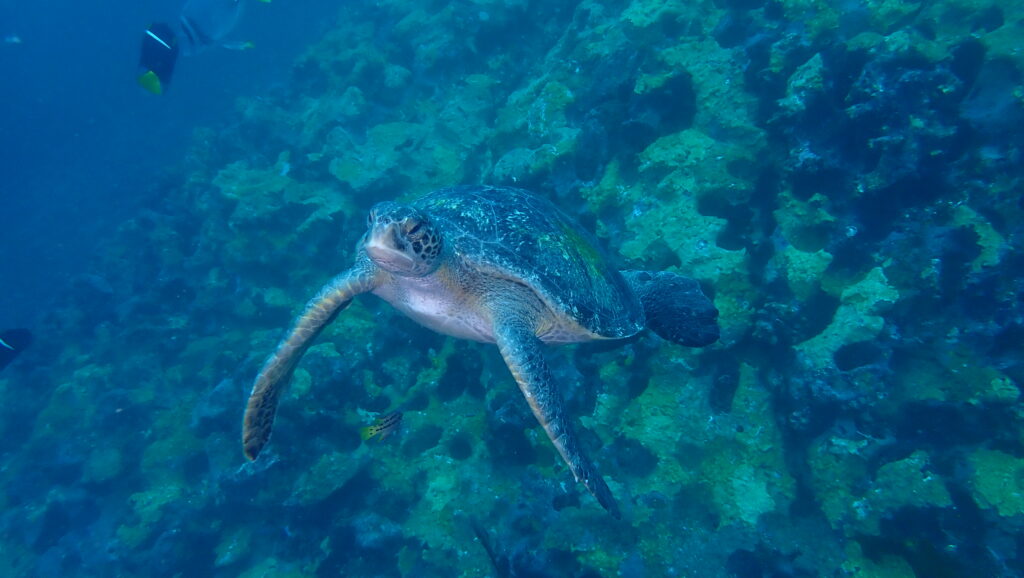
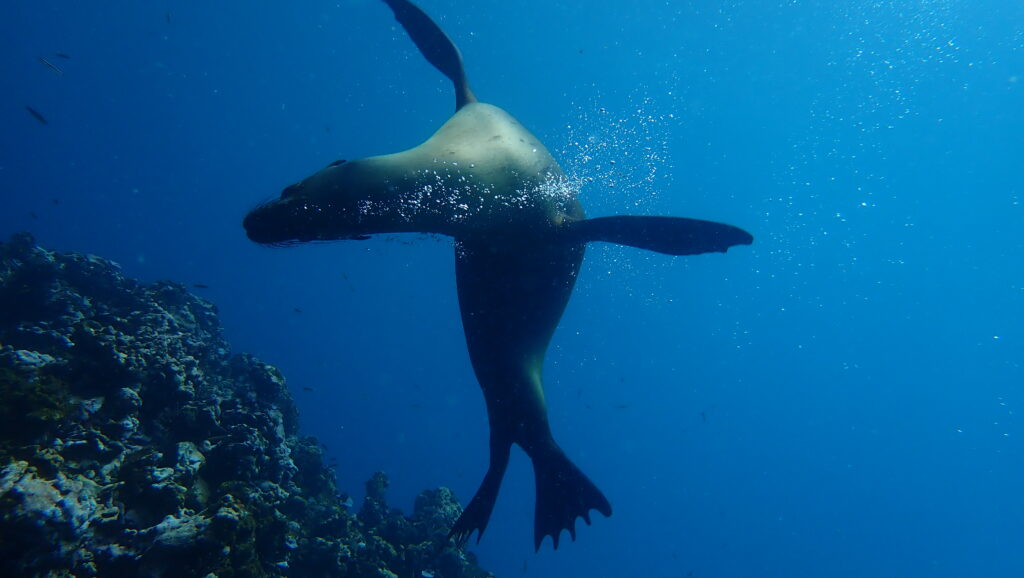

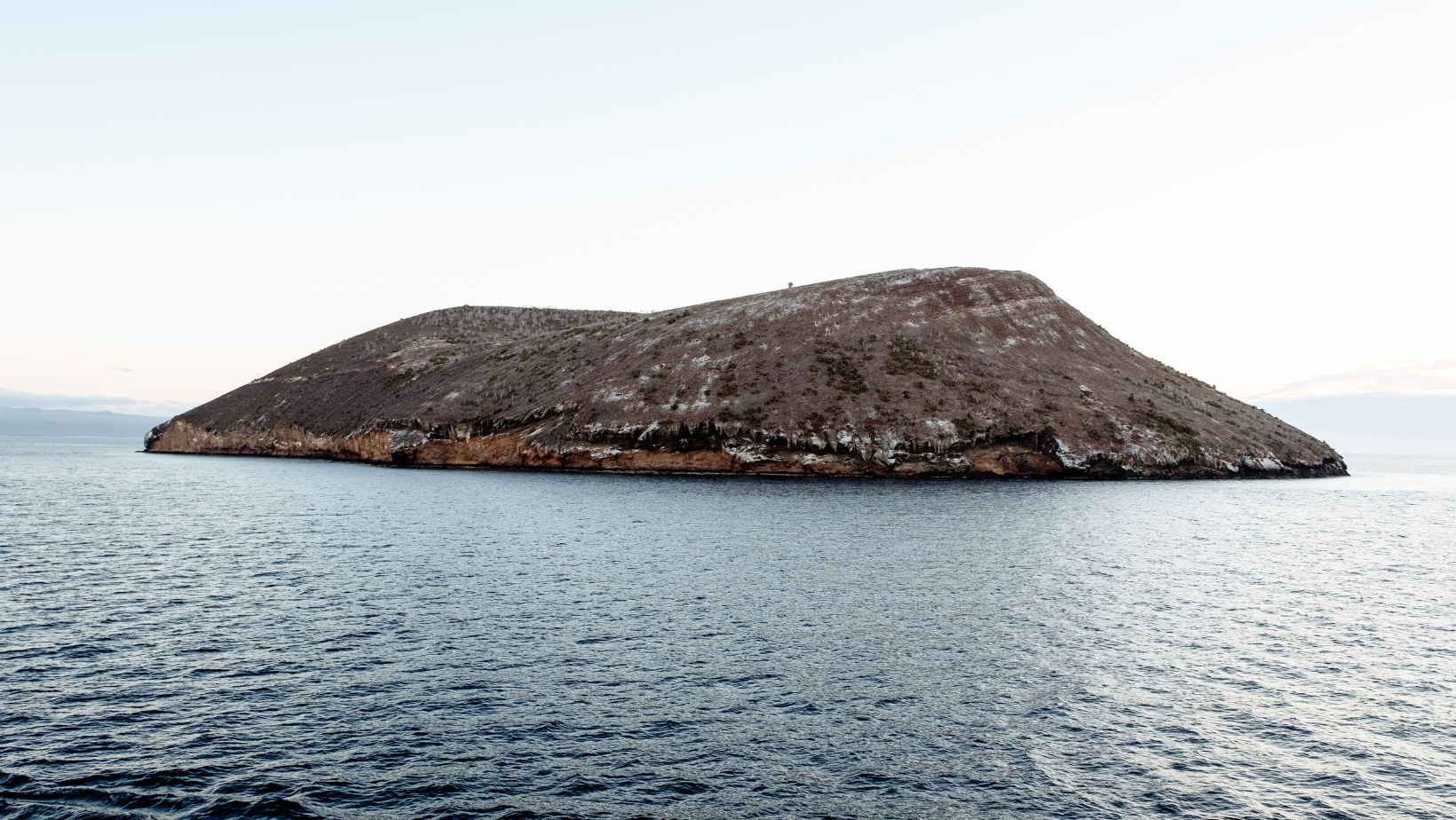
Dive site
The island is located north of Santa Cruz and west of Baltra. The Island is a volcanic cone which offers impressive walls plunging into the depths. Pelagic fauna is frequently encountered in these dive sites, in addition to the macro fauna which is observed on the walls. Diving is generally done between 15-120 feet (3-37 m). This island is accessible with daily trips from Santa Cruz and is rarely visited by diving cruises.

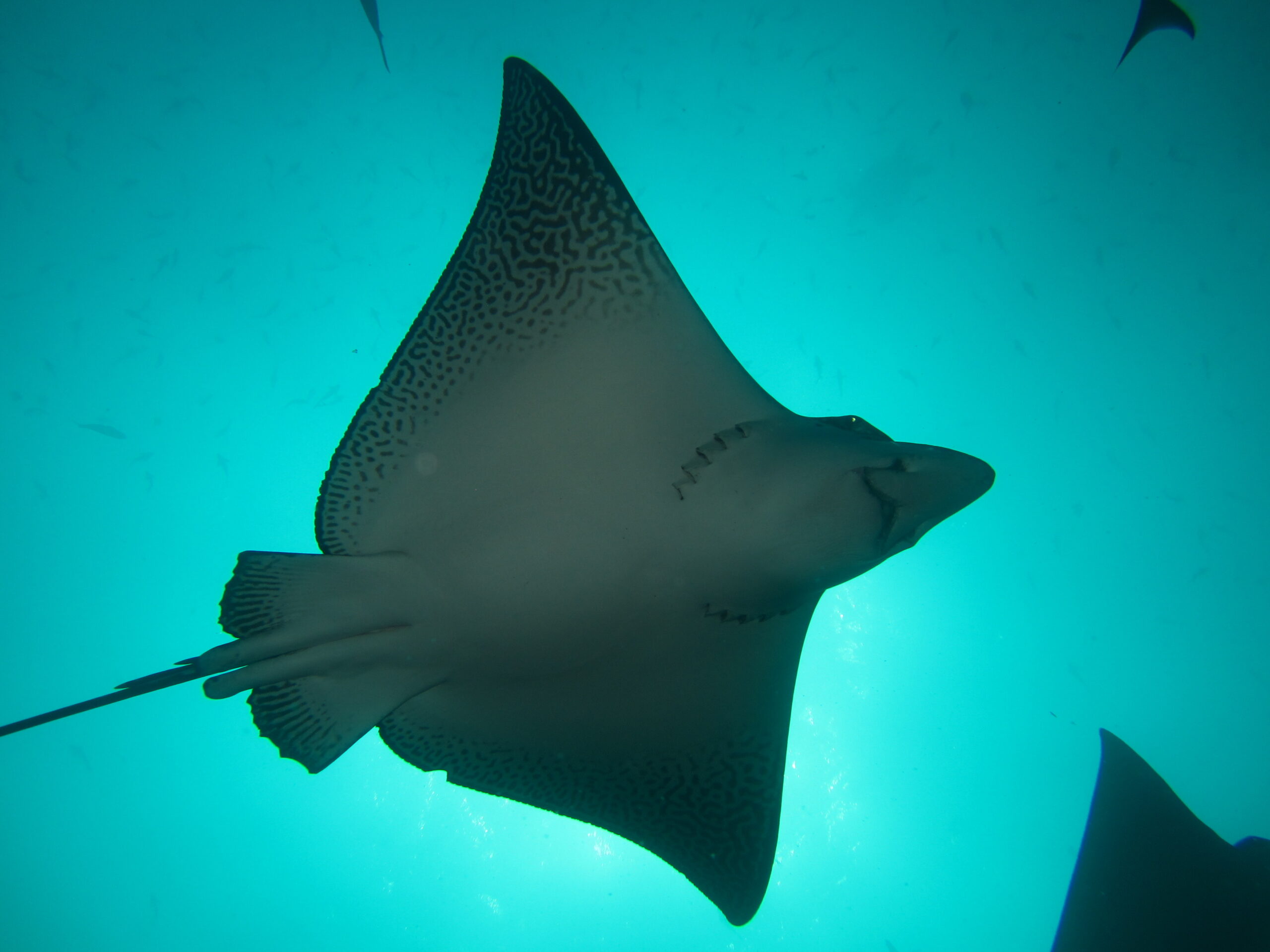
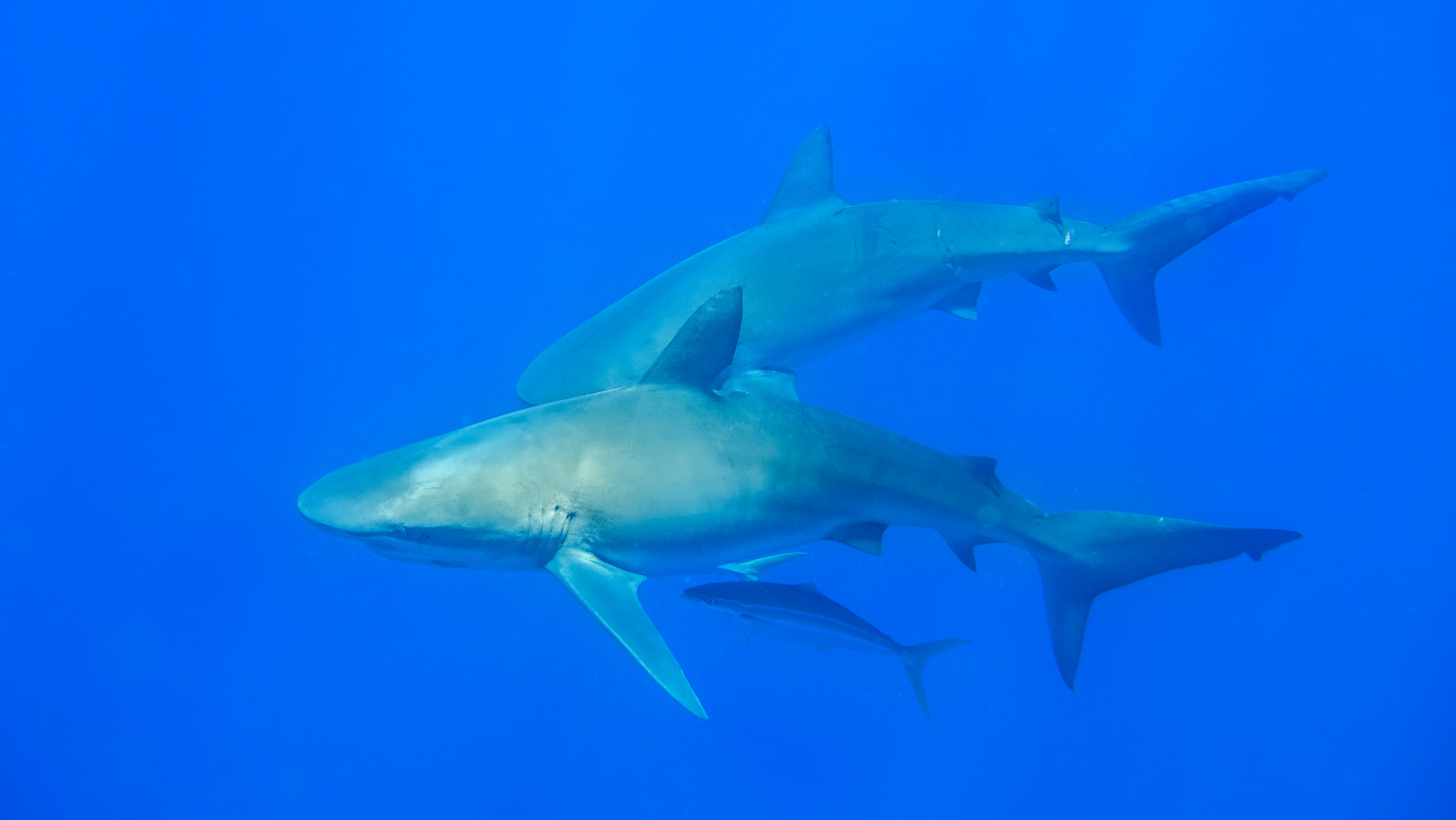

North Plaza Island is currently closed to visitors.
Dive site
On the other hand, it is possible to dive there from the north and south-eastern part of the island. This is an easy dive, with generally little current. A gentle slope of rocks descends to a maximum depth of about 80 feet (24 m) to a sandy bottom where it is possible to observe white-tipped sharks and Galapagos garden eels. It is on the southeast side, during the warmer season from January to May, where it is most likely to see various pelagic species including manta rays, hammerhead sharks, Galápagos sharks and the occasional whale shark. . This site is accessible by snorkeling or scuba diving and is rarely visited by day trips and is never visited by diving cruises.


This island is located in the east of Santa Cruz Island and is characterized by its incredible landscape. The tour begins with a walk on a trail through a forest of Opuntia cacti. You will also have to be careful where you step, because this island is home to a large number of land iguanas, the smallest in the archipelago!
On your walk you will also follow windy cliffs where you can spot red-billed tropical birds, swallow-tailed gulls, brown pelicans and the occasional frigate bird. The trail winds along the edge of the cliff for a few hundred meters. You will also come across the famous “single sea lion colony” : a heterogeneous collection of male sea lions, most of them old, who have lost their territories. Amazingly, they climb the cliff via rock steps. You can visit this island with a day tour from Santa Cruz and on some naturalist cruises.
Dive Site – Anchorage
This site is a shallow site, with a maximum depth of 25 feet (8 m) where it is possible to dive with young sea lions. This site is not very popular and visiting is sometimes prohibited when there are too many sea lions. This is a site where snorkeling and scuba diving are permitted.
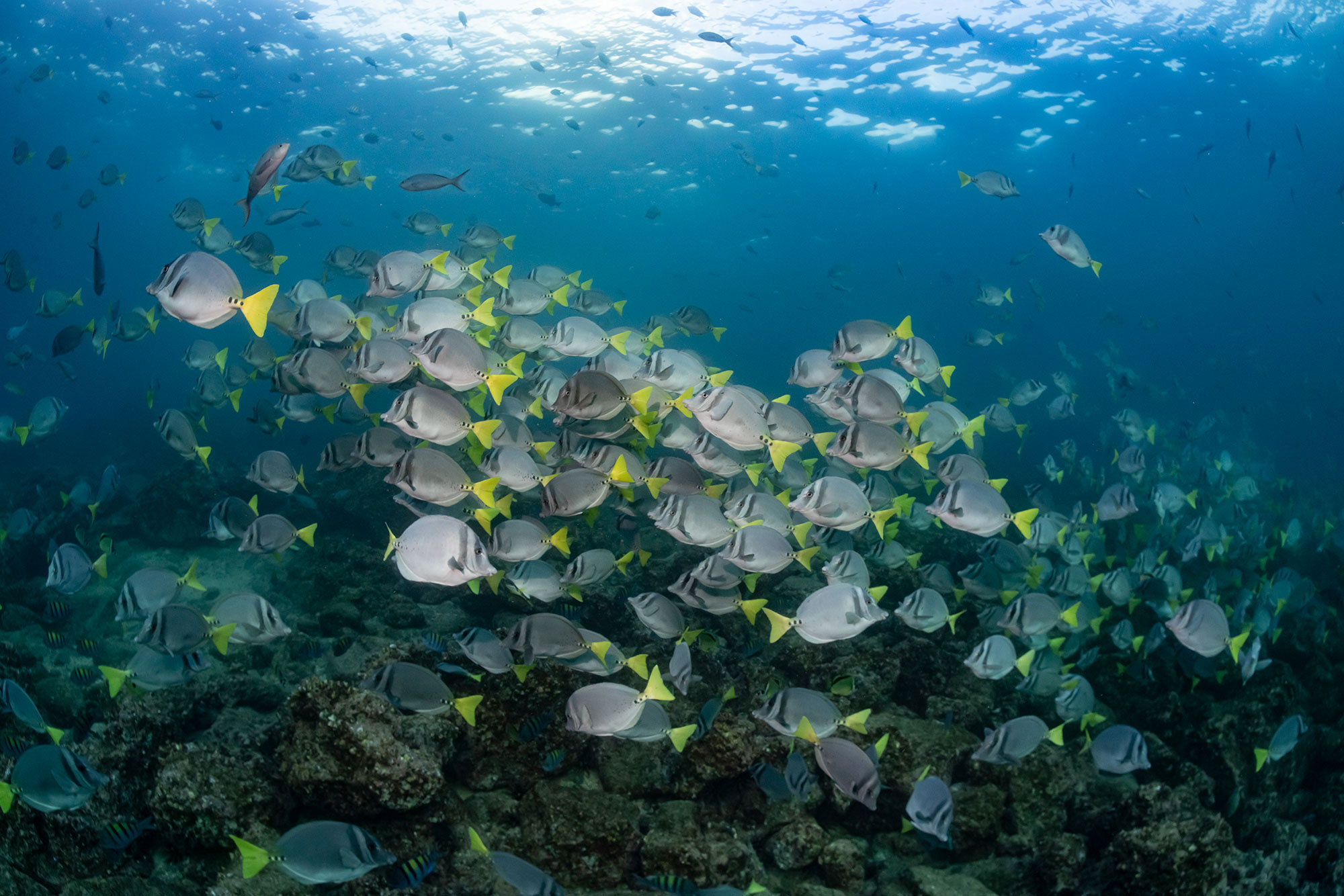
Dive site
Cousins Rock is one of the most popular dive sites in the Central Islands. The triangular islet, formed of volcanic tuff, is located to the west of the coast of Santiago Island. This site is frequently visited by diving cruises. The region’s dive sites are characterized by their eroded surfaces covered with soft corals and gorgonians. Highlights include nudibranchs, frogfish, seahorses, sea lions, eagle rays and schools of fish. This islet has a depth varying from 10-90 feet (3-27 m), with a slope descending to more than 140 feet (40 m). This site can also be visited in a day tour from Santa Cruz, but the boat ride takes up to 2 hours each way.
